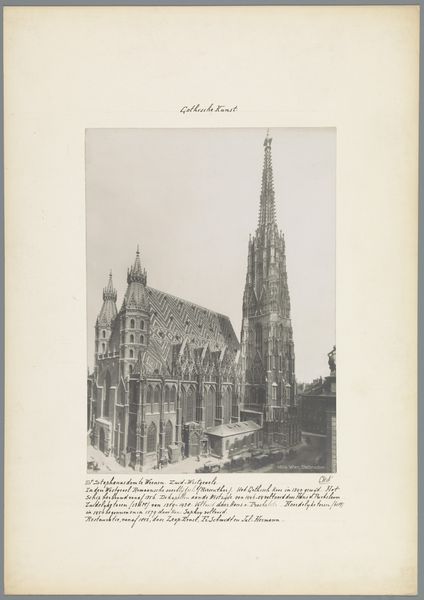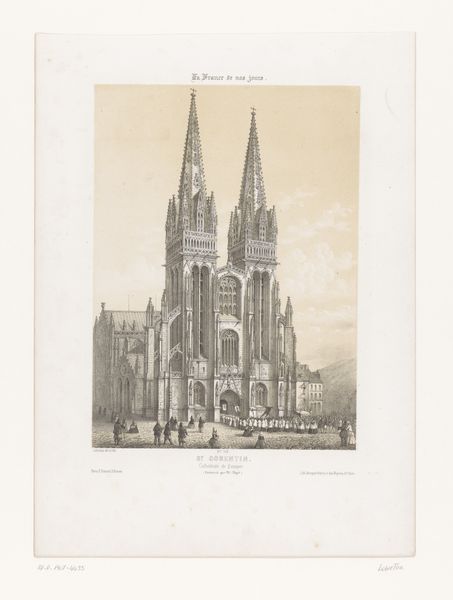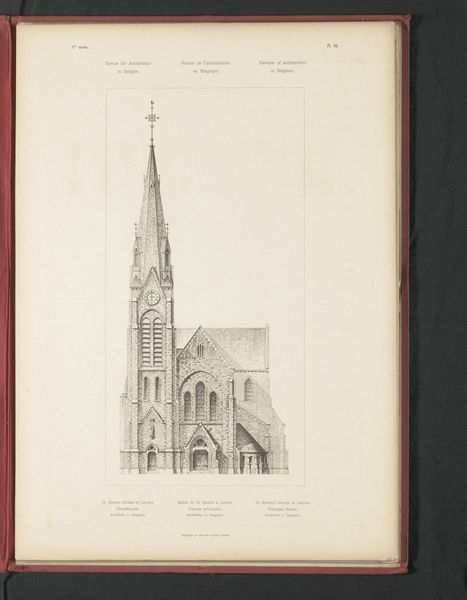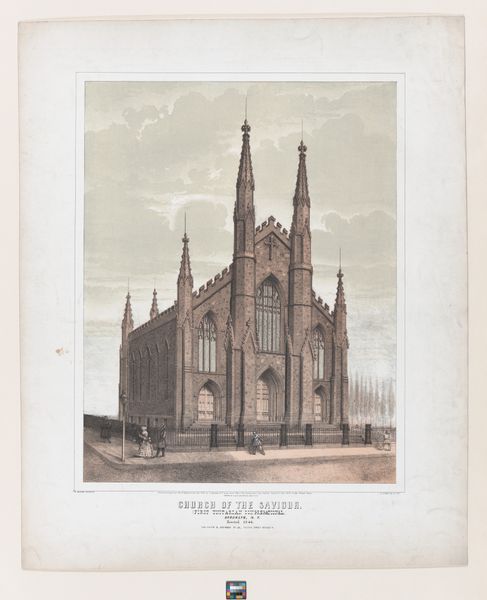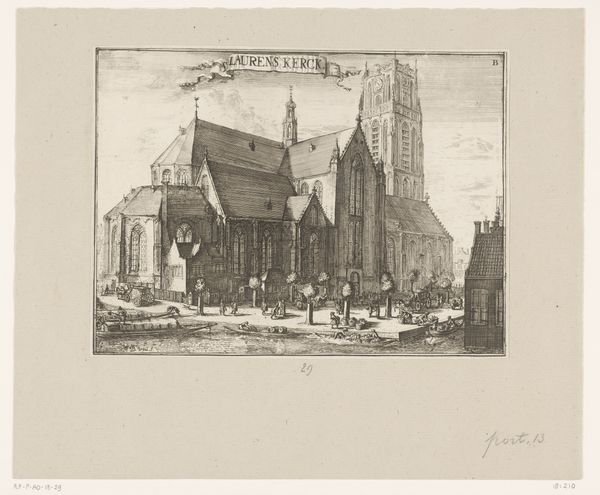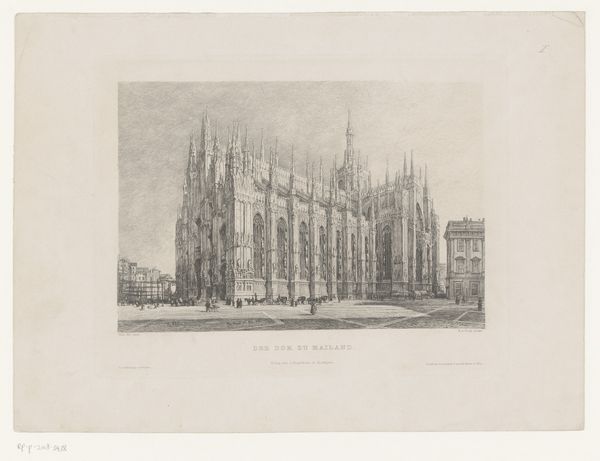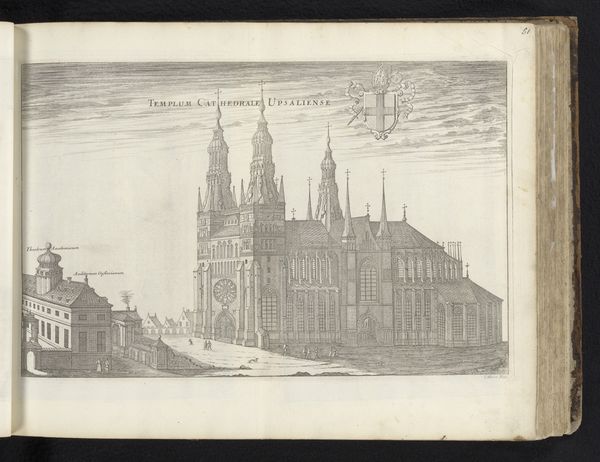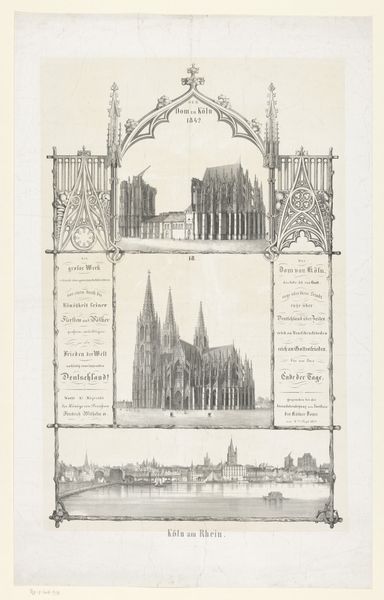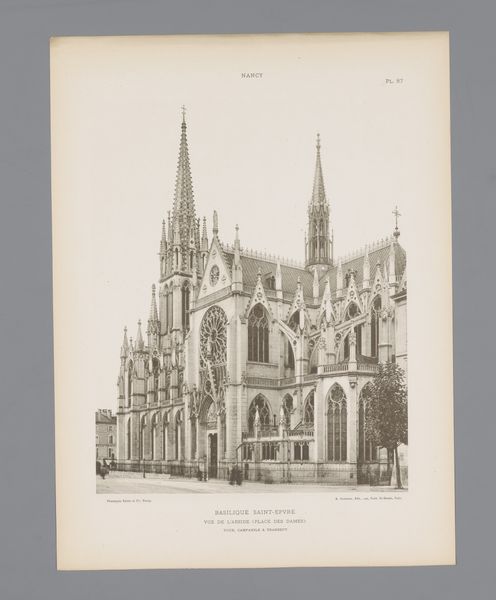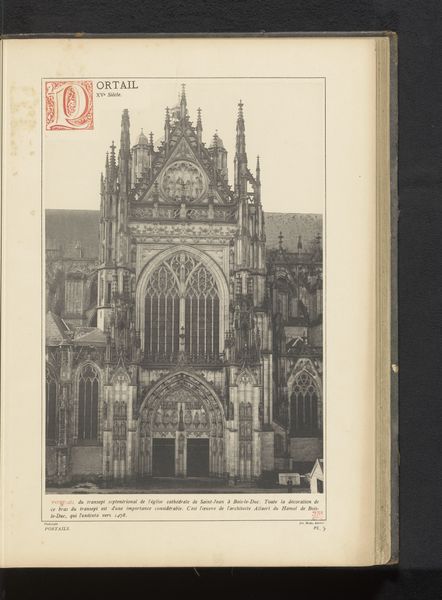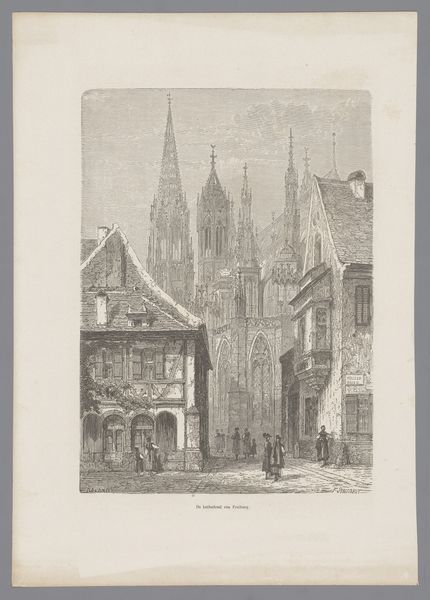
Reproductie van een ontwerp van een gezicht op de Saint Patrick's Cathedral te New York before 1886
0:00
0:00
drawing, print, paper, engraving, architecture
#
drawing
# print
#
paper
#
cityscape
#
engraving
#
architecture
Dimensions: height 316 mm, width 197 mm
Copyright: Rijks Museum: Open Domain
Editor: This is a reproduction of a design of St. Patrick's Cathedral in New York, pre-1886, created by Lakeside Press. It’s a print, an engraving on paper. The detail is incredible! What really strikes me is how the cityscape seems to emerge directly from the lines on the page. What do you see in it? Curator: What grabs my attention immediately is the industrial process behind this seemingly delicate image. The labor involved in producing multiple copies through engraving highlights the commodification of art and architecture during this period. This wasn't just about appreciating the cathedral; it was about disseminating its image widely. How does mass production alter the viewer's relationship to a sacred space, do you think? Editor: That’s fascinating! I hadn't considered the mass production aspect. I was so focused on the craftsmanship, the detail achieved through the engraving. Curator: Exactly! It's about holding these two ideas—craftsmanship and industrial production—in tension. Consider the paper itself, sourced and manufactured, the engraver’s skill shaped by their social and economic circumstances. Every element, from the ink to the press, reflects a specific material reality. It challenges the romantic idea of the solitary artist. Editor: So it's less about the cathedral itself, and more about the conditions that made this image possible. Curator: Precisely. The cathedral is the subject, yes, but the print itself is a material document of its time, revealing insights into the era’s industrial processes, labor dynamics, and consumption patterns. This changes the dialogue about the division between "high" art of architecture versus the "low" art of commercial reproduction. Editor: I see, now. Examining the piece from that perspective reveals so much more about its historical context. It has reshaped how I perceive the image as an object, not just as a picture. Curator: Agreed. Looking at the materiality encourages a broader understanding of art’s purpose and the many hands involved in bringing an image like this to the public.
Comments
No comments
Be the first to comment and join the conversation on the ultimate creative platform.
